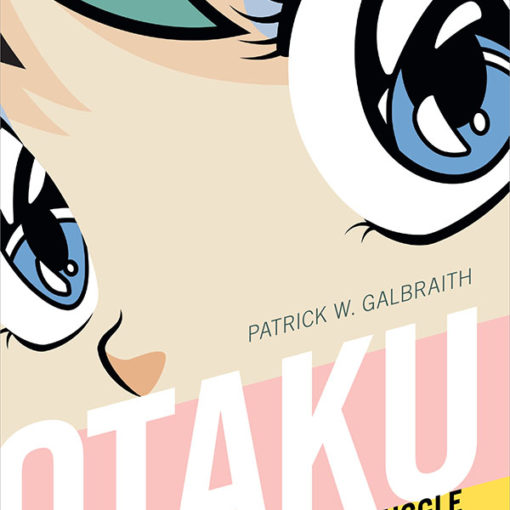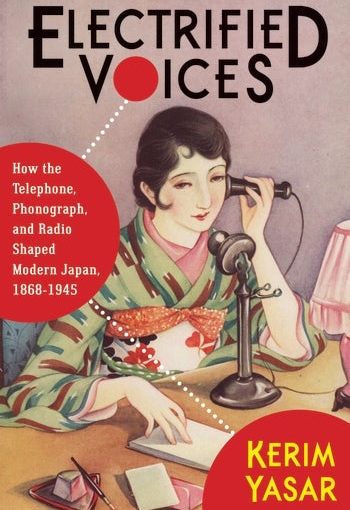Saitō Tamaki. Beautiful Fighting Girl [Sentō bishōjo no seishin bunseki]. Translated by J. Keith Vincent and Dawn Lawson. Minneapolis: University of Minnesota Press, 2011.
Nina Cornyetz
Saitō Tamaki’s 2000 Sentō bishōjo no seishin bunseki, skillfully translated by J. Keith Vincent and Dawn Lawson as Beautiful Fighting Girl, is the first book to take a serious, nonjudgmental look at the phenomenon of the so-called Japanese otaku. Saitō insists that otaku have a “sexual orientation” towards cartoon figures, some of which combine human, machine, and whimsical features (such as a girl with a jet engine for legs, and bunny ears). Because Saitō cannot locate this sort of sexual response in himself, he sets out to investigate what makes the otaku “tick.” His chapters range across this subject from variable angles, from a psychoanalysis of the otaku to a cultural genealogy of the beautiful fighting girl. In his introduction, Vincent summarizes, “Saitō’s otaku recognize that, to the extent that the ‘real world’ is itself part of the Imaginary, there is no intrinsic difference between desiring a drawn or animated image and desiring an actual human being.”[i] This orientation, holds Vincent, is a potentially radical, queer position on the “fictionality” of everyday life.
Saitō argues that in our visually saturated world, sex for the otaku brings a measure of reality to the imaginary of the cartoon characters. The study endeavors to de-pathologize otaku by refusing to call them perverts because of their masturbatory practices, and insisting that such masturbatory acts do not take the place of the otaku’s heteronormativity in other modes of interaction.[ii] Thomas LaMarre has critiqued the study for thus recuperating the otaku within a heteronormative framework.[iii] Vincent answers this criticism by stressing the descriptive nature of Saitō’s study, adding, “In their ability to eroticize fiction, Saitō’s otaku decouple sexual desire from social identities and naturalized bodies in ways that queer theorists will find fascinating.”[iv] Just as jerking off to a bondage and discipline video does not mean the male viewer likes to be tied up and peed on in real life, so too just because the male otaku masturbates to anime figures does not mean he cannot or does not engage in normative sex with a partner. Saitô valorizes otaku for the creativity and (sexual) love of fiction revealed in their ability to masturbate to cartoon figures. . Most importantly, their orientation performatively reminds us that ultimately, “There is no sexual relation.”[v] That is, our sexual pleasure is more about our fantasy of the other than any “real” knowledge of him or her. We embrace what we imagine the Other to be. Slavoj Zizek cites a certain English commercial to illustrate this lack of relation. A girl kisses a frog, who turns into a prince. In turn, the prince kisses the girl, who turns into a bottle of beer.[vi] The otaku literalize the role of fantasy and asymmetry in sexual desire.
I think Saitō’s book is best when describing manga as a specific semiotic system characterized by “atemporality,” “high context,” and “multiple personality space.” Atemporality refers to the subjective rendering of time, or the suppression of chronological time in the anime/manga diegesis. [vii] “High context” refers to how sets of semiotic codes specific to cartoons and animation are layered one over another, to construct a visual space that is “excessively overdetermined in meaning and highly redundant.”[viii] Saitō surmises that this multiplicity of monologic codes characteristic of manga resembles that of a person with multiple personality disorder, in that individual characters are partial and incomplete.
Although Saitō wrestles with the problem of Japanese cultural exceptionalism throughout the book, there is nothing culturally essentialist to his point that the history of cartoon reception in the West is characterized by a broad censorship of content and marketing only to children, while in Japan no such limitations exist. Myriad genres of manga are consumed by adults. It seems perfectly logical that a readership accustomed to all manner of stories in cartoon format – including pornography – should move more easily into masturbatory relations with those cartoons.
However, reading Saitō from a Lacanian perspective is deeply frustrating, like negotiating a maze with countless dead ends. For example, he writes: “I will keep the focus on the interactions between the media and the Imaginary. … [O]taku can be discussed only in imaginary terms.”[ix] The imaginary register is about identification with one’s specular image (“it’s me!”) and the resultant ambivalence of narcissism, because we are always less than the self-image that we love. Further, the imaginary is always already structured by the symbolic. As subjects, we cannot experience the imaginary unmediated by the symbolic, threaded through with our symptom(s). So when Saitō says “imaginary,” doesn’t he mean “fantasy”? The basis of all sexual relation is that it is screened through fantasy. This is the meaning of “there is no sexual relation.” Fantasy veils us from the real; i.e. the lack in the other. Fantasy protects us from castration. Lacan says that our reality is structured by fantasy, culled from both symbolic and imaginary registers. To rephrase Saitō then, otaku traverse the fantasy of their reality through these manga/anime figures.
Like the phallic mother, says Saitō, the fighting girls are figures of imaginary plenitude, lacking nothing. And, they are in possession of the imaginary phallus. Otaku thus fantasize a space that is not “symbolically castrated.” But then Saitō writes, “the hysterical phallic girl is a girl who is identified with the penis. The penis here, however, is a hollow, empty one that will never function again.”[x] He also writes, “visual expression in Western space is Symbolically castrated, while in Japanese space there is only Imaginary castration, at best. In Western space any image that symbolizes the penis is censored, while in Japanese space as long as you do not portray the penis itself anything goes.”[xi] Not only does Saitō conflate the imaginary phallus (of the phallic mother) and the biological penis, but if there is “imaginary” castration, or better put privation, then there must be an acknowledgment that the mother does not have the imaginary phallus. Desire first arises out of this realization that the mother does not possess the phallus, and that she lacks something, which “I will be for her”.The phallus designates meaning as the signifier of the part that is missing, as that which the other desires. To be symbolically castrated means I give up a piece of my jouissance to take my place in discourse as a subject.
Saitō also argues that his fighting girls are “inverted hysterics,” and writes, “Lacan considers hysterical symptoms as inquiries into the mystery of femininity. … Questions about sexual difference are none other than questions about existence itself.”[xii] Wait. Inquiries into “femininity” are not inquiries into existence. Isn’t hysteria a question not of existence but of the nature of sexual desire and relation? Saitō says fighting girls are hystericized because they are “empty” of desire and have no relation to trauma. But isn’t hysteria exactly about the return of repressed sexual trauma (real or imagined) in the performative form of somatic symptoms? According to Saitō, however, the phallic fighting girl has no symptoms. There is nothing causal about her in a psychoanalytic sense. Fighting “brings her into being,” and is her jouissance.[xiii] For Lacan, desire aims at jouissance, and instead gets objet a. In contrast, Saitō’s phallic girl actually has jouissance. At the same time, she is also the object of our otaku’s desire. How does desire operate when the object of desire is imagined to be complete? Where does my desire lodge, if not in the absence that founds the other for me? Doesn’t Lacan argue that the hysterical structure of desire is precisely the desire of the other? If so, whose desire operates in the “inverted hysteric”? And, aren’t all fictional characters empty? What happens in front of a picture? Lacan says that we lay down our gaze, and instead feast our eyes. The visual representation tames us with the paradoxical absence of a central field and yet the representation of an imaginary plenitude. If desire is in this picture, it is on the side of the artist, in the showing, which feeds the appetite of the eye.[xiv] In other words, drive is somehow constitutively absent in the contemplation of the artwork. So, what is operating in the masturbatory practices of the otaku? A mechanical sexual release divested of drive proper? Clearly not for Saitō, because he claims the otaku desire the phallic girls. The problem is highlighted in a published discussion between Saitō, Azuma Hiroki and Kotani Mari, quoted by Vincent in his introduction: what kind of sex is masturbation? Just because I cannot know the other’s desire does not mean that sex with the other is the same as masturbation with a visual aid. Or is it? After all, as Slavoj Zizek writes:
For animals, the most elementary form, the “zero form,” of sexuality is copulation; whereas for humans, the “zero form” is masturbation with fantasizing (in this sense, for Lacan, phallic jouissance is masturbatory and idiotic); any contact with a “real,” flesh-and-blood other is not something evident but inherently traumatic, and can be sustained only in so far as this other enters the subject’s fantasy-frame.[xv]
The real problem is that, in the passionate love and desire reported by otaku for their anime figures, we are in a realm that doesn’t conform to the configurations of the desiring subject in Lacan. That the Lacanian terms don’t quite fit is in itself not nothing. Lacanian terminology becomes Saitō’s bricolage. Using the terms at hand, such as hysteria, he reformulates the concepts to describe his findings. Another reader might find an application of Lacanian psychoanalysis without such adjustments. However, in Saitō’s reading of the phenomenon, the mode of desire flowing from otaku to fighting girl cannot be smoothly adapted to Lacanian concepts. Replacing Saitō’s Lacanian terms with less specific ones, such as “fantasy” in place of “imaginary,” does little to solve the problem.
Still,
it is good when dealing with fantasy to remember that what one desires most may
be what one wants the least.[xvi] Saitō’s
point, ultimately, is that otaku know this perfectly well, and that the ethics
of the sexual relation (such as it is) is not
the same thing as a masturbatory fantasy. We construct our “realities” by
traversing our fantasies, be they in the real world, or in comic books.
[i] J. Keith Vincent, “Translator’s Introduction – Making it Real: Fiction, Desire and the Queerness of the Beautiful Fighting Girl” in Saitō Tamaki, Beautiful Fighting Girl, trans. J. Keith Vincent and Dawn Lawson (Minneapolis: University of Minnesota Press, 2011), xviii.
[ii] Saitō, Beautiful Fighting Girl, 30.
[iii] Thomas LaMarre, The Anime Machine: A Media Theory of Animation (Minneapolis: University of Minnesota Press, 2009), 256.
[iv] Vincent, “Translator’s Introduction,” xx.
[v] Jacques Lacan, Feminine Sexuality: Jacques Lacan and the École Freudienne, ed. Juliet Mitchell and Jacqueline Rose (New York and London: W.W. Norton, 1982), 170. See also 137-171.
[vi] Slavoj Zizek, The Plague of Fantasies (London: Verso, 2009), 94-95.
[vii] Saitō, Beautiful Fighting Girl, 136-139.
[viii] Ibid., 142.
[ix] Ibid., 23.
[x] Ibid., 160.
[xi] Ibid., 153.
[xii] Ibid., 164.
[xiii] Ibid., 163
[xiv] Jacques Lacan, The Four Fundamental Concepts of Psycho-Analysis, trans. Alan Sheridan (New York: W.W. Norton & Company, 1977), 105-119.
[xv] Zizek, The Plague of Fantasies, 82.
[xvi] On this point, see Bruce Fink, “The Subject and the Other’s Desire,” in Richard Feldstein, Bruce Fink and Maire Jaanus, eds. Reading Seminars I and II: Lacan’s Return to Freud (New York: SUNY Press, 1996), 76-97. Fink writes, “Given however, that the subject casts the Other’s desire in the role most exciting to the subject, that pleasure may turn to disgust and even to horror, there being no guarantee that what is most exciting to the subject is also most pleasurable. That excitement, whether correlated with a conscious feeling of pleasure or pain, is what the French call ‘jouissance’” (86-87).


